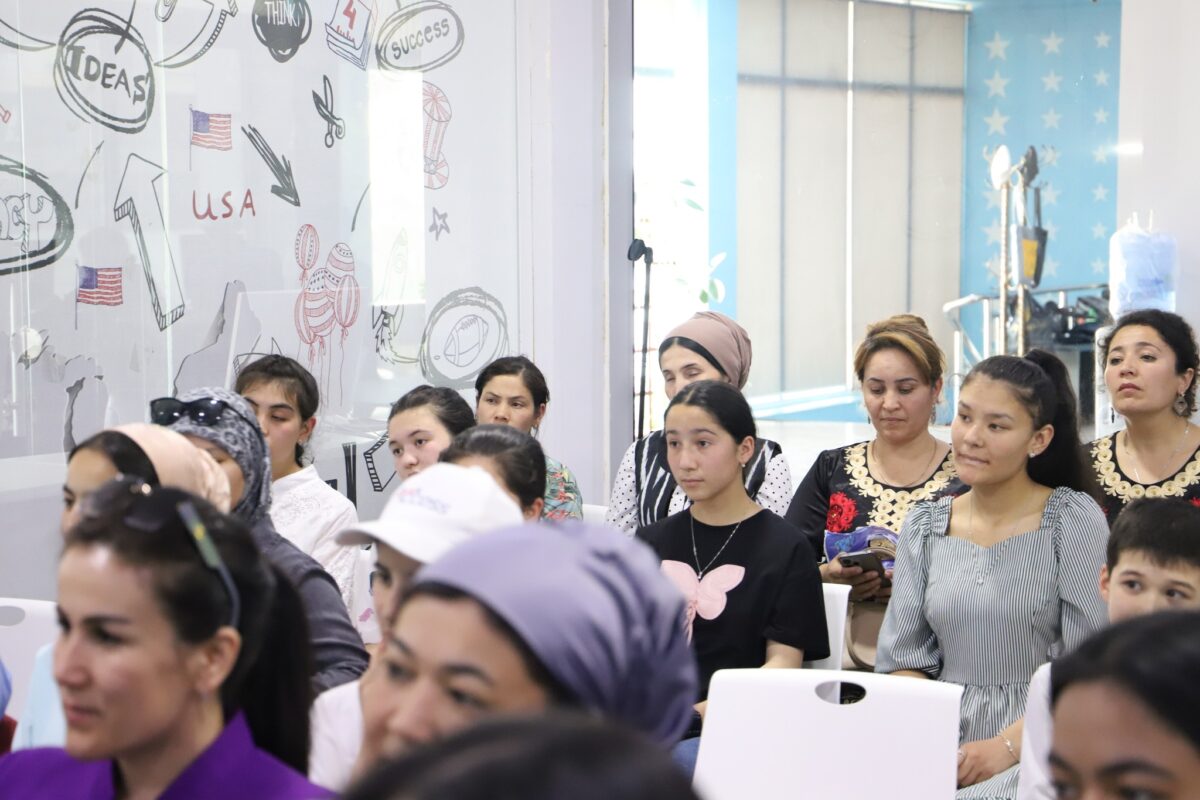The global push for more women and girls in science, technology, engineering, and mathematics (STEM) has gained significant momentum in many parts of the world in recent years, including the countries of emerging Europe and Central Asia.
Nevertheless, notable gender disparity in STEM fields remains in all but a handful of countries, often to the detriment of national economies. Encouraging girls and women to pursue STEM education and careers, particularly in IT, is widely viewed as being crucial for a country’s economic development—not least in those which are eager to move further up the value chain, creating better paid jobs for better skilled workers.
Despite some recent progress in gender equality, women in the Central Asian country of Tajikistan are among those facing significant barriers to an education and career opportunities in STEM fields.
Cultural norms, limited access to quality education, and a lack of role models contribute to the underrepresentation of women in STEM. According to recent data from the World Economic Forum (WEF), women constitute less than 20 per cent of the STEM workforce in Tajikistan, highlighting a critical need for targeted initiatives to encourage their further participation in the field.
The next level
Few people in Tajikistan understand this better than Madina Pulotova, the founder and CEO of Jahoni Mo (Our World), an NGO which aims to empower youth and women through STEM, specifically giving women and girls the necessary skills and knowledge in IT they need to pursue successful careers, as well as filling the gender gap in the field of robotics.
Like so many of the region’s most effective NGOs, Pulotova’s organisation was born from personal experience.
“When I finished high school in 1999 financial constraints meant that I couldn’t continue my education at that time,” she says. “It was only seven years later that I was able to enroll at university. I feel the pain of those young people who can’t continue with their education, and this drives what I do.”
Based in Khujand, Tajikistan’s second largest city, Jahoni Mo empowers women and girls by connecting technology and psychology in order to make sure that they have both the skills and emotional intelligence to achieve their goals.
It teaches participants computer and financial literacy, as well as running psychology workshops. “Partnerships with private companies means that many of the women on our programme can find jobs at the end of the course,” says Pulotova, adding, “we want to help these women get to the next level.”
More support is needed
While Tajikistan is not yet well known for its IT sector, the industry is growing, worth around 350 million US dollars in 2023. Its future development will be crucial in Tajikistan’s transformation from a rural, agricultural economy to a modern, digital, and service-based country.
Pulotova wants to ensure that women are a key part of that transformation, and that the digital development of Tajikistan is not confined to the capital, Dushanbe.
“There are more opportunities in Dushanbe, primarily because of access to education and technology. It’s also where most of the largest companies are based. But people here in Khujand and the north of the country are just as smart,” she says.
As with so many NGOs, Jahoni Mo faces perennial issues with funding—the current project is being supported by the Office of the Roving Ambassador of Finland for Central Asia, with further support from American Space Khujand, a partner organisation that provides a physical space for the project’s larger events, and TajSoft, which is taking care of the NGO’s website.
A key pillar of US policy in Tajikistan, American Spaces is a US Department of State initiative with a network of cultural centers in more than 140 countries that serve to connect the world with the United States.
Modeled after public libraries, American Spaces provides youth with access to English courses, cultural and community events, and information about studying in the US. In short, it’s one of the most cost-effective ways of sharing American culture and ideals with foreign audiences and countering false narratives.
Before becoming Jahoni Mo’s CEO in 2022, Pulotova was American Spaces’ programme coordinator in Khujand for 16 years, working closely with local Government and USG exchange programme alumni on designing and implementing community development programmes.
Connecting businesses and NGOs
Part of Jahoni Mo’s mission, Pulotova says, is to make social entrepreneurship in Tajikistan more effective, so that NGOs do not need to be so reliant on funding.
This, she adds, would allow the Jahoni Mo to hire more staff. “We are currently reliant mainly on volunteers,” she says. It would also allow Jahoni Mo to expand its reach. The current programme encompasses around 40 women and girls in the project funded by the Finnish Embassy, while Jahoni Mo also prepares 10 or so students for the Global Robotics Challenge. But it’s clear that Pulotova would like to empower more women to take up careers in tech.
And it all comes back to education.
“I can see that girls are interested in this field, in STEM, that they have a passion for it. What they need are the opportunities to thrive, and are doing all we can to help them.”
In September, Jahoni Mo will send a team including three girls to Greece for the Global Robotics Challenge—something that clearly fills Pulotova with pride. She hopes it will be a catalyst for more support, particularly from Tajikistan’s business community.
“We need more connections between businesses, individuals and NGOs,” she says. “Because non-profits should not be left to do everything on their own.”







